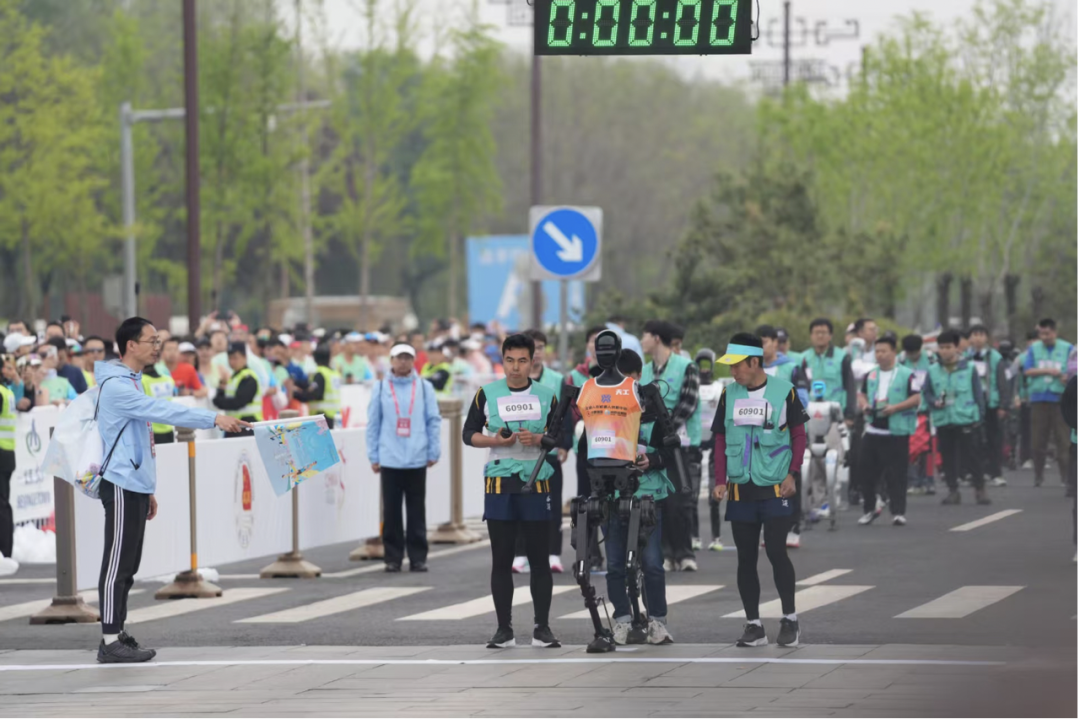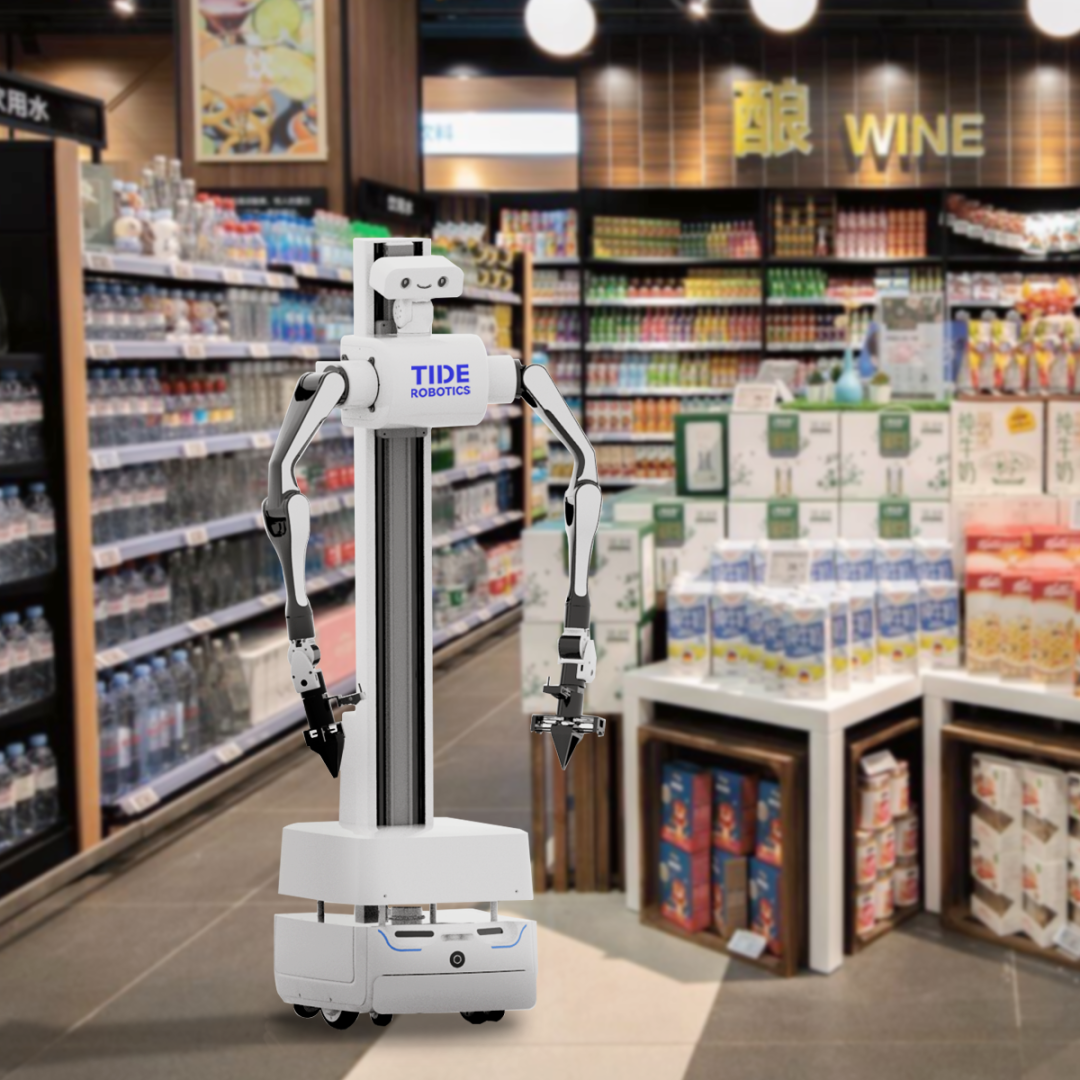Click the blue text to follow us
01
Yesterday morning, I watched the live broadcast of the world’s first humanoid robot half marathon, observing the performance of many robots and various comments from netizens. As someone with over a decade of experience in the industry, I had anticipated the robots’ performance, but there are still many areas for improvement in the overall event management, organization, live streaming details, and audience guidance.
Was this marathon a showcase of strength or a large-scale failure? I believe we should view it rationally; the positive aspect is the genuine science popularization and a return to reality, while the negative effect is the premature hype and excessive emotional fluctuations.

02
This marathon attracted significant attention from state media and self-media, resulting in a substantial flow of traffic.
Some companies have realized that TO SMV (short video) is a good idea, quickly spreading brand awareness through traffic to become media favorites, and these media darlings can help boost orders and further the traffic flywheel. Dancing, kung fu, and somersaults amazed many, claiming that surpassing foreign countries is the light of Chinese technology, which is a double-edged sword.
However, this marathon left many people astonished, becoming a laughingstock for many self-media outlets. Remote control, falls, and turning around made many exclaim that all this money spent by the state and capital is just a big toy for subsidies, which is a harsh criticism.
03
Traffic comes quickly and goes just as fast; it only follows emotions, moving from one extreme to another. From the event’s comment section, we can see a polarized understanding: some viewers regard robots as “Iron Man”-like all-purpose assistants, while others belittle them as “high-end toys.” This reflects the lack of science popularization regarding robots by the state and industry; the public’s deep understanding of robots cannot be achieved overnight. Intelligent driving has developed for over a decade, yet the concept of staged development is not widely understood. Many people entrust their lives to intelligent driving; it’s not that they trust intelligent driving itself, but rather the brands behind it, along with a degree of luck.
Currently, humanoid robots have not caused any accidents, but there is already a sense of impatience. The endorsement by the state machinery is the greatest brand trust, and the current situation has led many to hold black-and-white views. The development of any entity is multifaceted and staged; we need to recognize this realistically rather than succumb to emotional fragmentation, requiring more tolerance rather than rampant emotions.
For practitioners, it is crucial to fully understand the stages of the robot industry, rationally view both praise and criticism, and focus on doing one’s job well.
New media, primarily based on short videos, is a lever that can quickly amplify and package content; using this lever effectively is indeed important. However, robot companies should not become traffic bloggers but should focus on long-term, stable product and business development.
04
Some say Deepseek represents a national-level innovation, which I somewhat agree with, as Deepseek signifies a paradigm shift. However, humanoid robots are still far from being a national endeavor; the likelihood of a sudden technological breakthrough is low, and accumulation and sedimentation are crucial. The development of YS 10 to its current level is already impressive, but it should not bear the burden of national responsibility; products have their development rules, and companies have their own development rules.

The country needs to enhance consumption and improve technological competitiveness. Embodied intelligent robots, as representatives of technological competition, are also beneficial for industry development. The state’s support for YS is a blessing for both YS and the industry, but a more commercialized unified market that fosters market competition is even more important. This event also reflects a certain degree of regional protection. Road rights, airspace, and local support for the industrial chain are all limitations of a unified market. While attracting investment is certainly important, promoting differentiated development in the industry is also crucial, allowing the market to compete fully and ensuring that good money drives out bad.
05
Humanoid robots have three key technological points that need to be overcome: foot-based mobility, hand and arm-based operational capability, and AI-based perceptual learning intelligence.
This marathon has shown us the obsession at various levels with “humanoid robots” entering human life; a more rational perspective would recognize that the marathon is just one aspect of humanoid display and not the most commercialized part. Competitions focusing on grasping operations and perceptual learning would better drive actual business, but running a marathon is the most sensational way to do it, and it can be said that the leading departments will also be swept up by the traffic.
06
Human evolution depends on genes and mutations, and embodied intelligent robots show us the emergence of a new species that can infinitely approach humanity, which is exhilarating. The genes of embodied intelligent robots are the domestic supply chain, open-source data, and open-source algorithms. This area can leverage the advantages of domestic governments and associations to set standards and guide the enhancement of foundational capabilities, while mutations require the exploratory spirit of each enterprise, constantly experimenting and iterating.
This marathon illustrates that the era of technological equality for humanoid robots is still far off; without equality, how can there be a rise in mass sports?
07
Let technology return to technology, and business return to business. A mature product must go through three major stages: the technological maturity stage, the product maturity stage, and the commercialization maturity stage. I personally believe that humanoid robots are still in the early stage of technological maturity, while composite robotic arms are in the late stage of technological maturity to early product maturity, and specialized robots are in the mid-stage of commercialization maturity.
I am a firm believer in robotics; humanoid robots are just one category of robots, and we should recognize the overall value of the robotics industry. The entire industry has many valuable categories, such as logistics handling, commercial services, special purposes, and personal consumption, all of which require substantial funding to truly enter the robotic era. We should advocate for a hundred flowers to bloom rather than deliberately focusing on humanoids.
Humanoids are currently in the early stage of technological maturity, requiring events like marathons and boxing matches to cultivate talent and accumulate technology. However, we should not overly amplify traffic and need to guide designs to focus more on operational and AI capability competitions to accelerate the maturity of more foundational technologies. At this stage, technology is king, and technological experts deserve recognition.
I firmly believe that in the next two years, embodied intelligence will accelerate its iteration, and composite robotic arms will quickly enter many application scenarios, leading to an explosion of product innovation. Investors and industry practitioners should pay more attention to the development of these robots and recognize their value. At this stage, products are king, and those who can create customer and product value deserve more respect.

08
The maintenance personnel during the humanoid robot competition holding umbrellas, spraying for cooling, and changing batteries indirectly prove the immaturity of the supply chain. I believe there are two ways to accelerate the maturity of the supply chain: one is continuous R&D investment, and the other is the use of commercial scenarios. Continuous R&D investment requires a scale of product sales, while the use of commercial scenarios can quickly expose and resolve issues, enhancing iteration speed.
Some say marathons are excellent for collecting data and durability validation; in my view, most of this data cannot be utilized and is more like completing a task for manufacturers. Durability validation has very mature methodologies that require accelerated aging and building scenarios for fault-free operation, and marathons are not the best validation scenario.
So how can we accelerate the maturity of the supply chain? Rather than mass-producing humanoid robots, we should focus on using key components of humanoid robots in multi-legged and robotic arms to promote large-scale production, thus driving more funds into the supply chain. Moreover, we should choose commercial and industrial scenarios that operate for 8 to 10 hours a day, rather than research and performance scenarios that may only be used for 3 to 5 hours a week; the difference in iteration speed is ten to twenty times.
09
The industry needs a dual-driven approach: one is frontier exploration represented by technology, solving problems of stable movement, dexterous operation, and intelligence; the other is scene innovation represented by product commercialization, addressing how to integrate key components and technologies to drive transformation and implementation. In the short term, it is challenging for both to ferment, but a gradual integration with mutual advancement is the optimal and lowest-cost route.
The integration of technology and scenes, along with the integration of software and hardware, will promote multi-form innovation, ultimately leading to a true era of significant robot development, which we all look forward to.

